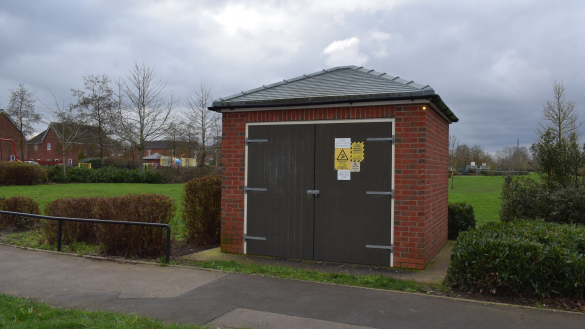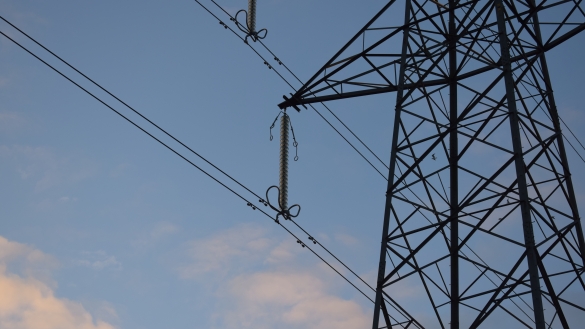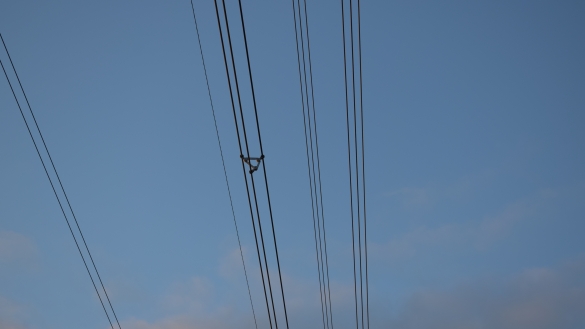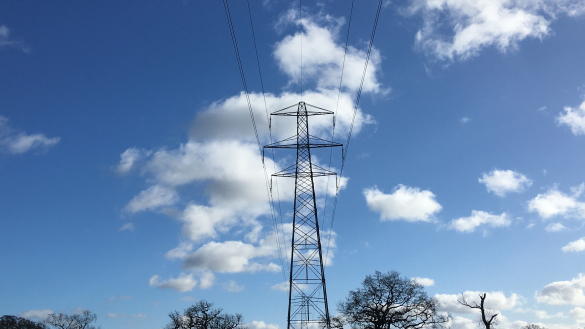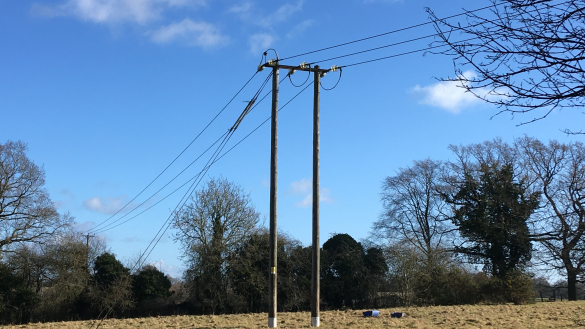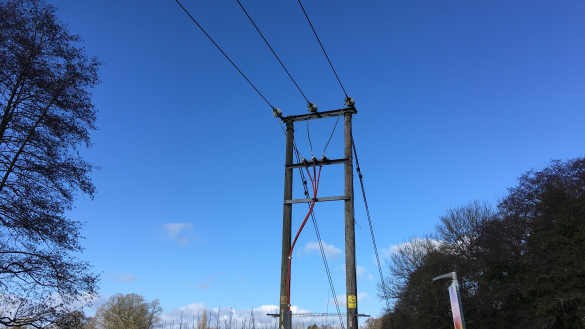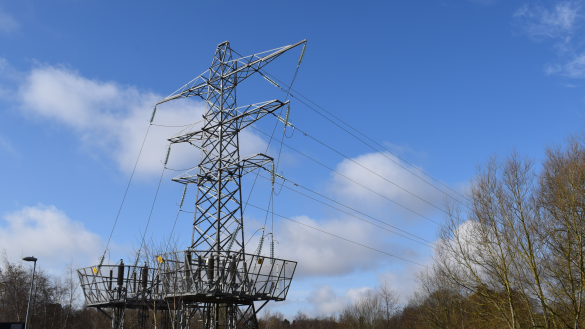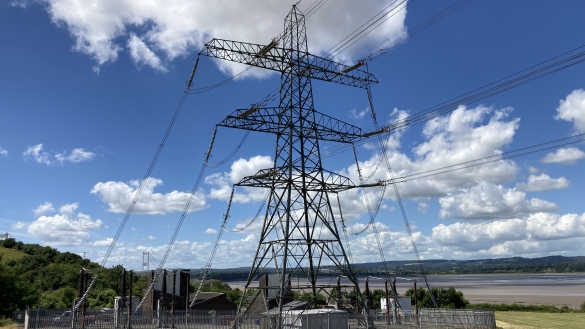What is near me?
What electricity infrastructure is near me?
This page is designed to help you identify what electrical infrastructure you would like more information about and help identify the voltage it operates at. Once you have identified the equipment, there are links to what levels of EMFs are produced.
Substations
Transmission and distribution voltage
Substations convert electricity into different voltages. This is needed so the electricity can be transmitted throughout the country and then distributed to local neighbourhoods and into our homes, businesses, and wherever it is needed.
The higher the voltage the substation is transforming, the larger it is. The largest transmission voltage substations (400 kV and 275 kV) are typically the size of a few football pitches. Below are examples of transmission and distribution voltage substations. The entrance to a substation will note its name, who owns it and the voltage it operates at.
Transmission voltage substation
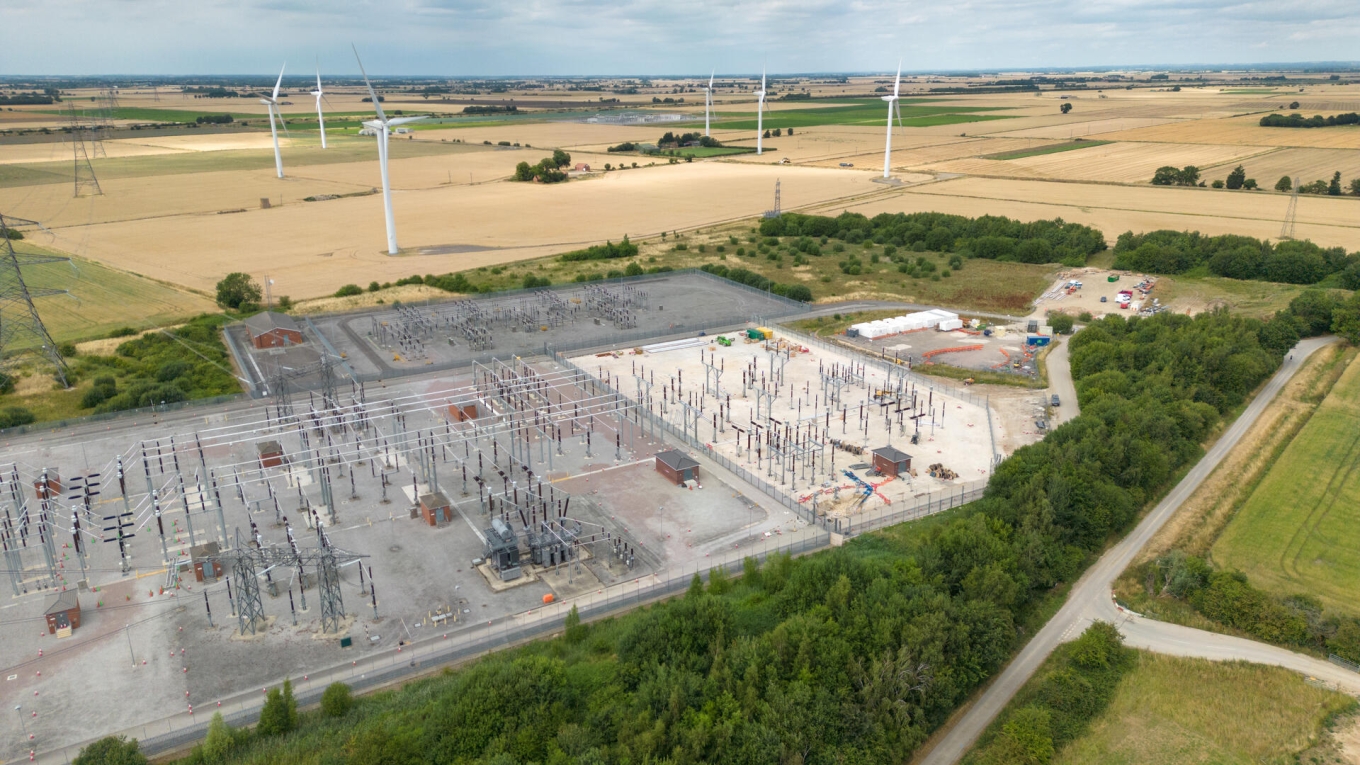
Distribution voltage substation

Overhead lines
There are a variety of different overhead line designs, which range from large steel lattice towers to wood pole constructions. Guidance on how you can identify the voltage of an overhead line is given below.
How do you identify the voltage of an overhead line?
An overhead line has a number of components which can help identify its operating voltage.
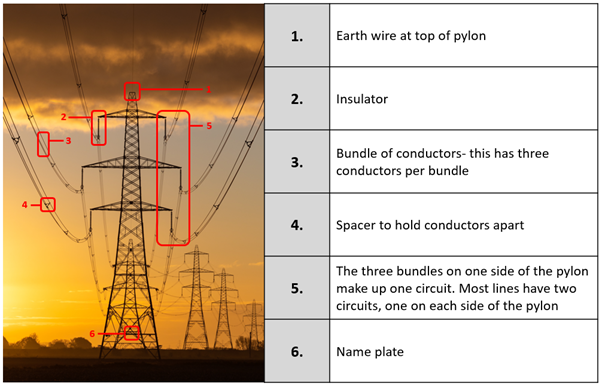
The easiest way to check the voltage is by looking at the name plate on the pylon, which is outlined at the bottom of the diagram above, labelled “6”. If the name plate does not have sufficient information or you cannot find it, the following clues can be used.
Transmission or distribution voltage?
Some of the characteristics of a transmission voltage overhead line are:
- Overhead lines operating at 275 kV and 400 kV will have steel lattice pylons.
- Usually, they have more than one wire in each bundle (labelled “3” on the diagram above). The pictures below are examples of two and three wire bundles on 400 kV overhead lines.
- The insulators (which hold the wires onto the pylon, marked “2” on the diagram) are usually long and there may be more than one.
- The pylons are taller and more substantial than lower voltage pylons. Below is a 400 kV and 132 kV overhead line side by side for comparison. Transmission voltage pylons are around 50 metres in height and 132 kV overhead lines around 30 metres.
- Distribution voltage lines are smaller and usually decrease in size with decreasing voltage. However, 132 kV overhead lines can also have wooden poles. Some examples of various distribution voltage overhead lines are provided below.
Once you have identified the operating voltage of the overhead line, information on the levels of EMFs that are produced can be found on the button below.
Other equipment
Cable sealing ends
These are pylons where the overhead line connects to an underground cable. The pylons look different to others and can occur on any voltage overhead line.
At transmission voltages these tend to have a fence around them, but at operating voltages of 132 kV and below, wires often transfer from an overhead line to underground cable on the pylon or wood pole itself, without needing a fence. There is no equipment within a sealing end compound that produces significant EMFs itself. The EMFs are produced by the overhead line and underground cable. Below are some examples of sealing end compounds.
